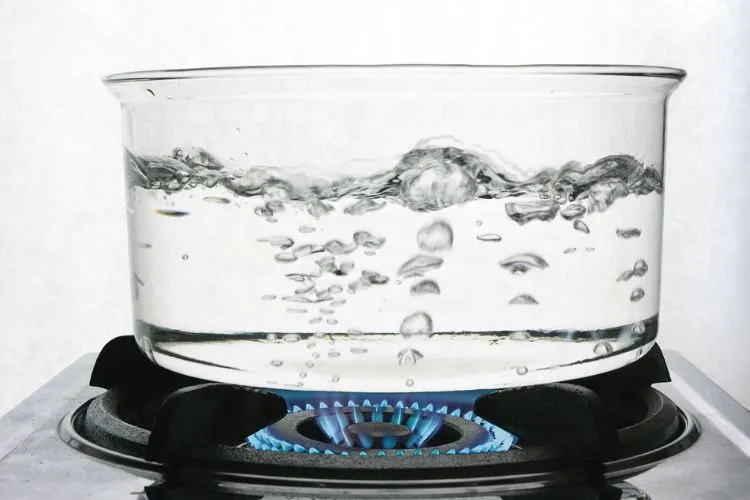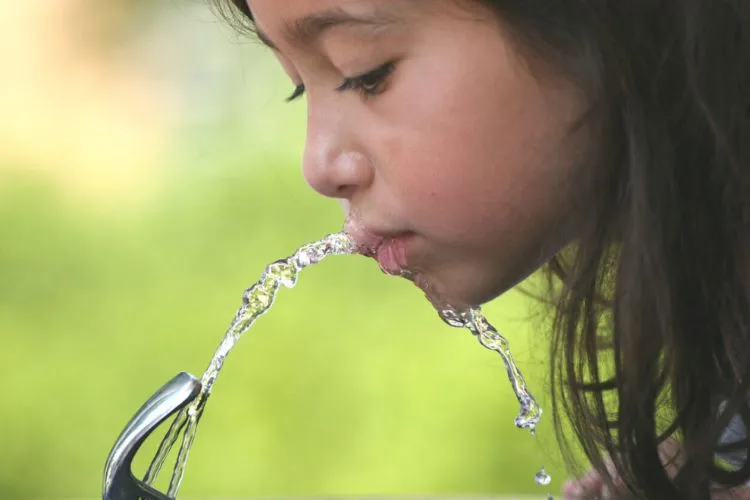In the quest for safe drinking water, we often turn to methods passed down through generations. One common method is boiling water.
It’s a practice as old as cooking itself. But when it comes to removing chlorine from our water, how effective is it?
This article delves into the relationship between boiling water and chlorine removal, the science behind it, and offers guidance for those seeking purer water.

💦 What is Chlorine and Why is it in Our Water?
Chlorine is a powerful disinfectant used worldwide to make water safe for drinking. Its primary role is to kill bacteria, viruses, and other pathogens in our water supply, ensuring it’s safe to consume.
While it’s a crucial part of public health efforts, chlorine can leave an unwanted taste and odor. In some people, it can cause mild irritation and discomfort.
💦 The Boiling Process Explained
Boiling water is one of the oldest methods of purification. When water reaches its boiling point, it begins to evaporate as steam.
The process of boiling can kill microbes and remove some impurities. But how does it affect chlorine?
💦 Does Boiling Water Remove Chlorine? Unveiling the Truth
Yes, boiling water for about 15-20 minutes can remove chlorine from water. When water is boiled, chlorine gas can escape into the air, leaving the water less chlorinated. This effect occurs because chlorine’s boiling point is lower than water’s.
As the water boils, some of the chlorine transforms into gas, which then evaporates. However, the extent to which boiling removes chlorine depends on several factors including the water’s initial chlorine concentration and the boiling time.
Pros and Cons of Boiling Water to Remove Chlorine
Pros
✅ Boiling is a simple and cost-effective method.
✅ It doesn’t require special equipment, making it accessible to everyone.
Cons
❌ Boiling doesn’t remove chloramine, a compound often used along with chlorine in water treatment.
❌ It can be time-consuming for those needing large quantities of water.
❌ Boiling concentrates some minerals and impurities as water evaporates.
💦 Alternative Methods to Remove Chlorine from Water
While boiling can reduce chlorine levels, other methods might suit your needs better. Filtration systems, such as activated carbon filters, effectively remove chlorine and chloramine without altering the taste.
Chemical treatments, like vitamin C tablets, can also neutralize chlorine. Each method offers a different balance of cost, effectiveness, and convenience.

💦 Expert Tips for Safe Drinking Water
For those who choose to boil their water, a few tips can ensure the best outcome:
- Let water boil for at least 15-20 minutes to maximize chlorine removal.
- Cool and store boiled water in clean, sealed containers to prevent recontamination.
💦 Health Implications of Chlorine in Drinking Water
The introduction of chlorine into our water supplies represents a critical advancement in public health, effectively reducing the prevalence of waterborne diseases by eliminating pathogens such as bacteria and viruses.
However, the presence of chlorine in drinking water has raised concerns over potential health implications, particularly with long-term exposure.
While chlorine itself can contribute to minor discomforts such as skin irritation and an unpleasant taste or odor in water, more significant concerns arise from by-products created when chlorine reacts with organic matter in the water.
These by-products, including trihalomethanes (THMs) and haloacetic acids (HAAs), are linked to various health issues. Research indicates that long-term exposure to high levels of THMs may increase the risk of certain cancers, such as bladder and colon cancer, and could also lead to reproductive problems.
Authorities regulate the levels of chlorine and its by-products in drinking water to minimize these risks, but the debate over the balance between disinfection benefits and potential health hazards continues.
As we advance, further studies and new purification technologies aim to both maintain the antimicrobial benefits of chlorination and reduce the formation of harmful by-products, ensuring safer drinking water for all.
You may also read: Does A Water Softener Remove Fluoride?
💦 Regulatory Standards and Guidelines for Chlorine in Drinking Water
Regulatory standards and guidelines for chlorine levels in drinking water are established to safeguard public health while ensuring the effectiveness of disinfection. In the United States, the Environmental Protection Agency (EPA) sets regulatory limits under the Safe Drinking Water Act.
The maximum residual disinfectant level goal (MRDLG) for chlorine is set at 4 parts per million (ppm) or milligrams per liter (mg/L), a standard designed to balance the need for effective microbial control with the goal of minimizing chemical exposure.
Internationally, the World Health Organization (WHO) provides guidelines that are similar, recommending a maximum concentration of 5 mg/L under normal operating conditions, emphasizing the importance of maintaining levels as low as reasonably achievable.

These guidelines and regulations are crucial for water treatment practices, ensuring that water utilities manage disinfection processes to both effectively eliminate pathogens and limit chlorine residuals to safe levels within distribution systems.
The standards reflect a rigorous assessment of scientific evidence concerning the health effects of chlorine and its by-products, ensuring public health protection while allowing for the practicalities of providing large scale, sanitized water supplies.
💦 Frequently Asked Questions (FAQs)
Does boiling water remove fluoride and chloramine as well?
Boiling water does not effectively remove fluoride. For chloramine, boiling is less effective than for chlorine, requiring longer boiling times to achieve significant removal.
How long should you boil water to remove chlorine?
Boiling water for 15-20 minutes should significantly reduce chlorine levels.
Is boiled water better than filtered water?
The choice depends on your priorities. Boiled water is less chlorinated but might have a higher concentration of some minerals. Filtered water can remove a wider range of impurities, including chlorine and chloramine, without altering mineral content.
Can I use boiled water for my aquarium?
Boiling can remove chlorine, making the water safer for fish. However, ensure the water has cooled to room temperature before adding it to your aquarium.
Conclusion:
Boiling water can reduce chlorine levels, making it a viable option for those seeking a quick and inexpensive method. However, it’s important to weigh the pros and cons, considering factors such as time, effectiveness, and the presence of chloramine.
In pursuit of the safest drinking water, explore various purification methods to find what works best for your circumstances.

Devon Shorts, a seasoned expert with over a decade of experience in water safety, shares valuable insights on this blog “Aqua Safety Plus”. Trust his expertise to keep your water clean and your family safe.
